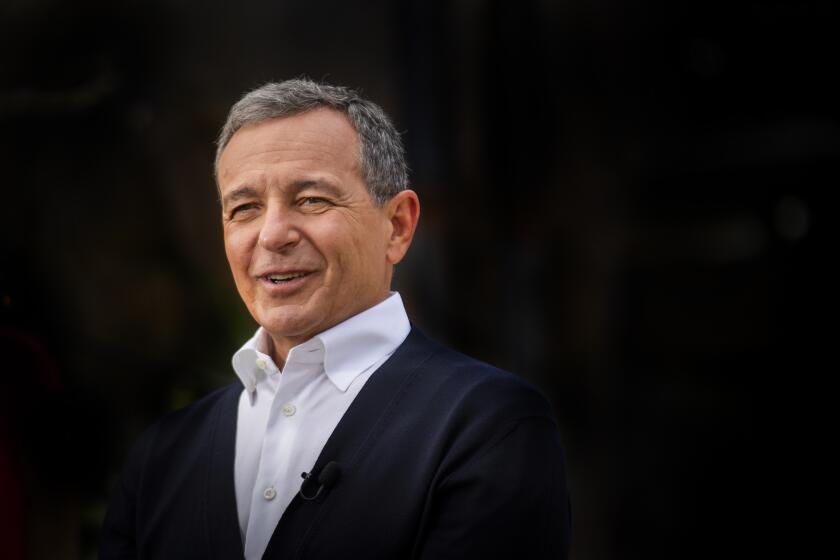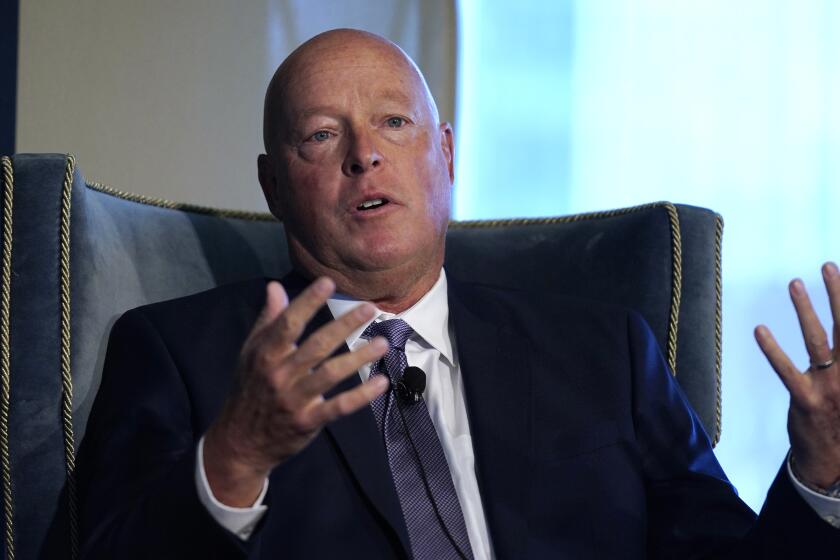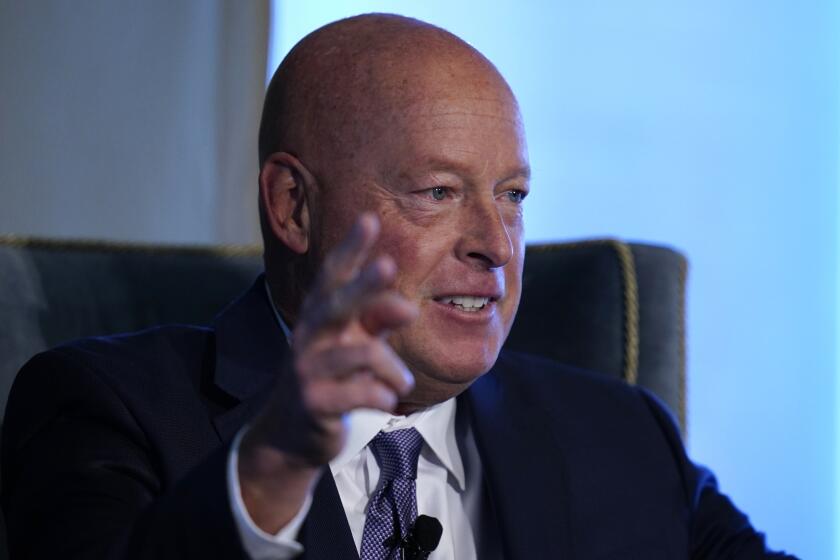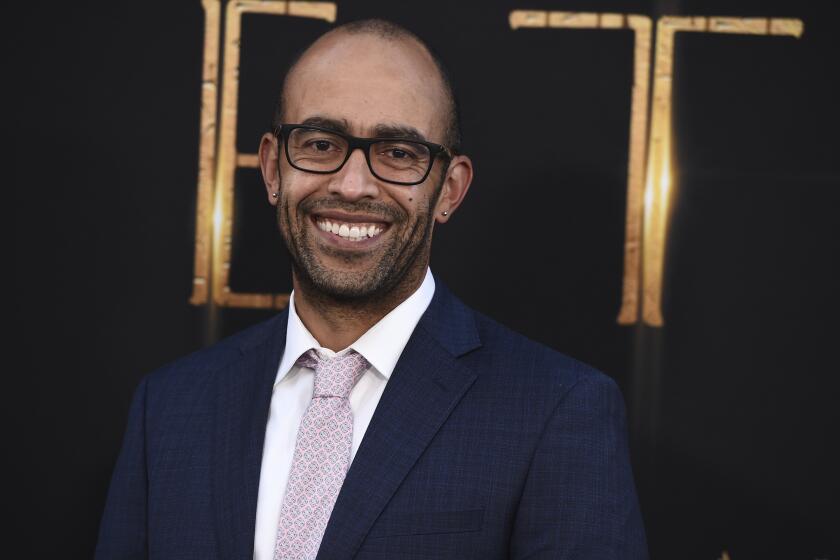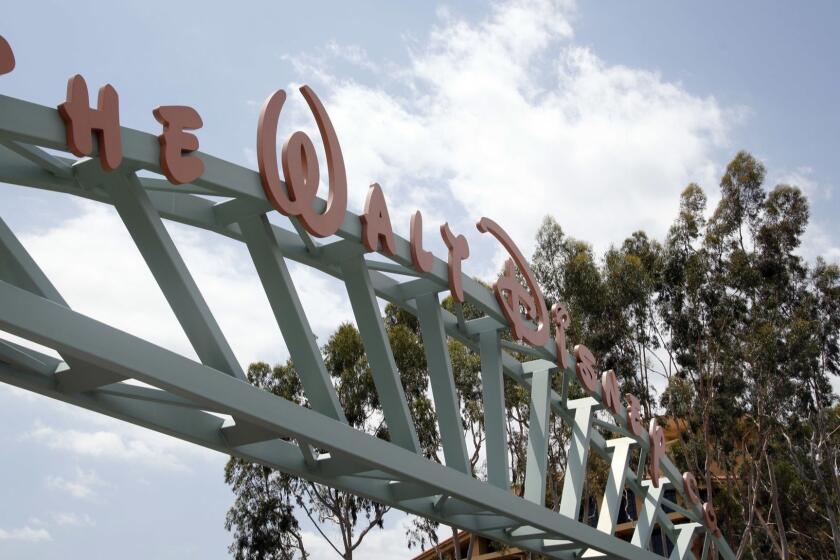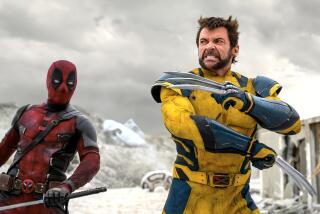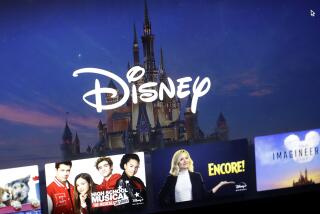Disney is not what it was when Bob Iger left. Does he have the magic touch to turn it around?
- Share via
Bob Iger’s return to the Walt Disney Co. was greeted with glee by Wall Street and Hollywood’s creative community. His 15-year tenure leading Disney — which included the landmark acquisitions of Pixar, Marvel, Lucasfilm and 21st Century Fox — made the industry believe he had an almost magic touch.
But Iger’s return, coupled with the sudden dispatching of his handpicked successor, Bob Chapek, on Sunday, is no fairy tale ending.
The company Iger is taking over is not the same as it was when he stepped down as chief executive in early 2020. And Iger, who officially began his brief retirement at the end of 2021, faces numerous challenges as he attempts to restore Disney’s glory, from turning a profit on streaming to plotting a future for ESPN to navigating a possible recession that could clobber tourism.
Under Chapek, the Burbank entertainment giant was dramatically reoriented around streaming during the COVID-19 pandemic in a way that caused angst among executives and talent, dimmed morale and sacrificed enormous sums of money to grow subscriptions for Disney+. Top executives bailed or were shown the door. Iger on Monday told staff he would enact his own restructuring of the company to put “more decision-making back in the hands of our creative teams,” which will effectively unwind Chapek’s controversial 2020 reorganization.
Inside the business of entertainment
The Wide Shot brings you news, analysis and insights on everything from streaming wars to production — and what it all means for the future.
You may occasionally receive promotional content from the Los Angeles Times.
With his return, Iger must contend with a gloomy economic climate, continued declines in TV ratings, accelerating cord-cutting and a stock market that has soured on the fiercely competitive streaming business. The company has lost 40% of its stock market value since January.
Perhaps most important and troubling is a sense that Disney’s unparalleled brand has taken a hit.
In a seismic shock to Hollywood, former longtime Disney chief Robert Iger will return to lead the entertainment giant, the Disney board announced Sunday night.
Chapek’s reputation suffered from flubs including a legal battle with Scarlett Johansson over box office bonuses and a political melee with Florida Gov. Ron DeSantis over the state’s Parental Rights in Education law, known to LGBTQ activists as “Don’t Say Gay” legislation. Initiatives to boost theme park profits, such as charging fees for fast access to attractions, left guests feeling squeezed. A decision to move 2,000 employees to Florida upset staff at a company where reputation matters more than it does for the typical Fortune 500 enterprise.
“It’s just a little bit of a sigh of relief that things are going be a little bit more positive and productive from the CEO suite,” said Brian Mulberry, client portfolio manager at Chicago-based Zacks Investment Management, which holds Disney stock. “It’s a very difficult time for Bob Iger to step back in, but to be completely candid, I don’t know that anybody else would be better at this moment in time.”
Disney did not make executives available for comment.
He has the board’s support, but Disney CEO Bob Chapek has had a rough time with DeSantis, a slipping stock and concerns about Disney+. How long will he hold on?
That no one, including Disney’s board of directors, has yet identified another executive to lead Disney is its own problem, analysts said. Disney’s board of directors said on Sunday that Iger would return to the CEO job for two years, during which he would groom a successor.
“The Board has concluded that as Disney embarks on an increasingly complex period of industry transformation, Bob Iger is uniquely situated to lead the Company through this pivotal period,” said Susan Arnold, Disney’s chairman (who will keep that title), in a written statement.
Iger struck a reassuring tone in his first email to staff on Sunday. “I know this company has asked so much of you during the past three years, and these times certainly remain quite challenging, but as you have heard me say before, I am an optimist,” he said.
Here are key players in the Walt Disney Co. leadership drama that saw the board bring Bob Iger back as CEO, replacing his former lieutenant Bob Chapek.
Iger himself took over from Michael Eisner in 2005 during a period of major turmoil for the company.
Iger delayed his own retirement multiple times, passing over potential successors like former Chief Operating Officer Tom Staggs before settling on Chapek, known to be a skilled business operator and a three-decade Disney veteran, if not a visionary leader. Disney typically promotes from within, and there are few, if any, people left who could credibly take the mantle from Iger.
One question is how Iger will unwind controversial changes that Chapek made to the company during his not quite three years at the top.
In a key early move, Chapek put his mark on Disney with a restructuring that concentrated power under a team led by Kareem Daniel, a longtime Chapek deputy. Daniel’s unit, known as Disney Media and Entertainment Distribution, or DMED (pronounced “DEE-med”), held enormous influence, deciding which projects would go to Disney+, Hulu, theaters or Disney’s broadcast and cable channels, including ABC and Freeform.
That decision was supposed to accelerate the company’s shift to streaming. But it mainly caused internal friction and resentment from leaders who felt that their autonomy was slipping away.
“Iger wasn’t in favor of the reorg, and creatives hated it,” said Rich Greenfield, an analyst at LightShed Partners.
In one of his first acts, Iger announced to DMED employees on Monday that the company would be restructuring again and that Daniel would be leaving the company..
“It is my intention to restructure things in a way that honors and respects creativity as the heart and soul of who we are,” Iger wrote. “As you know, this is a time of enormous change and challenges in our industry, and our work will also focus on creating a more efficient and cost-effective structure.”
Immediately following Iger’s return, producers who requested anonymity to preserve relationships began pining for the reinstatement of Peter Rice, the respected and talent-friendly former Fox executive who was fired in June. Rice, who served as chairman of television at Disney, was one of the executives who bristled under the new structure. Disney elevated Rice’s former No. 2, Dana Walden, to the top TV role.
Neither Rice, Walden nor Daniel returned requests for comment.
One of Iger’s biggest tasks will be to assess Disney’s all-important streaming business. Iger’s original plan for Disney+ when it launched in November 2019 was to cater to Disney fans with its well-known brands — Pixar, Disney Animation, “Star Wars,” Marvel superheroes — expecting it to reach up to 90 million subscribers by fiscal 2024. As streaming surged amid the pandemic, Chapek expanded Disney+’s purview to include more general-audience shows, like “black-ish” and “Dancing With the Stars,” in the hopes of reaching much loftier targets.
Plus: What the Les Moonves-LAPD scandal means for #MeToo and why free streaming channels could be the future of broadcast TV news.
Disney+ added 12.1 million subscribers during the most recent quarter, bringing its total to 164 million after less than three years. Analysts, though, worried about Disney diluting its brand.
“We would hope and expect that Mr. Iger examines the investment plans at Disney+ and re-focuses their investment on areas of franchise strength and away from broader general entertainment content,” said analyst Michael Nathanson in a note to clients.
It’s not obvious how Iger would defy problems in streaming that have also dogged Disney’s rivals as experts question whether streaming is worth the cost.
Market leader Netflix, for example, pared its spending as investors got skittish.
Disney’s direct-to-consumer business — including Disney+, Hulu and ESPN+ — lost $1.5 billion in the most recent fiscal quarter. In one of his final moves as CEO, Chapek emailed Disney leaders to call for cost-cutting measures, including layoffs. Disney+ is also raising prices and launching a version with commercials.
Nate Moore pushed for Black Panther’s introduction in “Captain America: Civil War.” His latest, “Black Panther: Wakanda Forever,” seeks closure after tragedy.
“Iger picked his exit time optimally because he got the credit for subscriber growth without ever having to deliver on profitability,” said Doug Creutz, an analyst at Cowen & Co. “Now he has to deliver on profitability and that’s challenging no matter who’s in charge.”
Iger may make even more radical changes, having recently said that traditional cable and satellite TV is headed for a “precipice.”
ESPN makes money but suffers from cord-cutting and escalating costs for sports rights, but Disney has consistently rebuffed speculation that it would spin off ESPN, despite pressure from investors. Dan Loeb of hedge fund Third Point LLC this year renewed his call on Disney to rid itself of ESPN, though he later backtracked.
Disney has to contend with a balance sheet burdened with debt from the acquisition of entertainment assets from Rupert Murdoch’s 21st Century Fox, Iger’s capstone to a career of splashy deal-making. He also inherits the quandary of what to do with Hulu, of which Comcast Corp. still owns a third.
Moments after putting the finishing touches on its landmark $71.3-billion takeover of 21st Century Fox entertainment assets, Walt Disney Co. on Wednesday began the arduous process of combining two massive organizations.
Then there’s the matter of inflation and a possible recession hurting consumer demand. “What’s he supposed to do?” Creutz asked. “Cut costs more? Raise prices more?”
One thing Iger immediately brings is a sense of stability. Dealing with talent egos and political quagmires requires the kind of finesse at which Iger excelled. Disney fans feel a deep emotional attachment and sense of ownership that spans generations and national borders.
The stock rose 6% to $97.58 on Monday.
“Stability is a huge thing,” Mulberry said. “[Iger left] a great culture that was very positive and productive. But that’s not the culture that’s there now. Can he resuscitate that and bring it back to that type of a feeling? If the answer is yes, and we start to see some immediate improvements in that regard, that would give us a better outlook going forward.”
Times staff writer Meg James contributed to this report.
More to Read
Inside the business of entertainment
The Wide Shot brings you news, analysis and insights on everything from streaming wars to production — and what it all means for the future.
You may occasionally receive promotional content from the Los Angeles Times.
